5 Ways To Make Your Chatbot More Contextually Intelligent
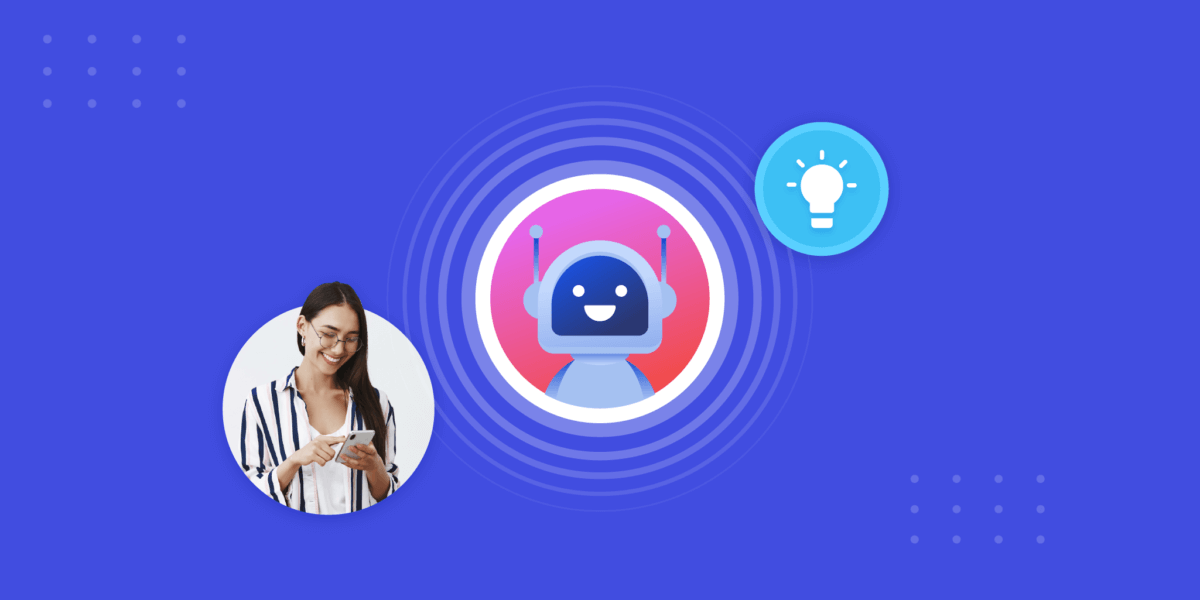
5 Ways To Make Your Chatbot More Contextually Intelligent
Intelligent and contextual-driven chatbots are supremely important for businesses. We have curated a list of chatbot characteristics and ways to create the perfect contextually driven chatbot.
We’ve all had our fair share of showdowns with customer service. And you too, as a user, probably prefer to talk to a live agent just because you feel they understand you better. We and 60% of other users are all in the same boat.
After all, we care about our problems getting addressed the right way with the right solution. And sometimes, we just don’t trust chatbots to do that.
Well, it’s mostly safe to say that the reason we feel that is because our experiences have largely been limited to below-par poorly trained chatbots.
We are approaching a time when we anticipate that technology will learn and evolve according to the needs of the customers. Customer-first companies are leveraging it to become more aware, contextually intelligent, and smarter in handling customer interactions. So what do they do?
They begin the change at the frontline of customer support – chatbots.
Building a contextual chatbot requires time, energy, resources and most importantly knowledge of current trends and best practices in the field. We’ve curated a blog explaining ways to perfectly design the perfect chatbot. Read on to find out more!
What does context mean in chatbots?
How does a contextual chatbot affect conversations?
Essential features of intelligent, contextually-aware chatbots
How to build a contextual chatbot? Here are 5 ways.

What does context mean in chatbots?
Context refers to circumstances surrounding an event, statement, or idea that allow it to be fully understood. For a chatbot, however, the context is a JSON object (an open data interchange format used to store and transfer data that is both human and machine-readable) passed from your application to the chat service of the customer. It is your application’s responsibility to keep the context consistent from one conversation turn to the next.
Context can be pulled from anywhere that has valuable information, including past records, meeting agendas, chat histories, email messages, and even browsing activity. It can be information such as a customer’s name, their agenda or goal from the interaction, and world knowledge about the topic in question.
How does a contextual chatbot affect conversations?
Chatbot maturity levels can be used as a parameter to estimate your bot’s readiness for the market. If a young bot is expected to handle roughly 20% of common customer issues, a mature bot is expected to handle over 80% of recurring questions to cultivate valuable customer relationships. This is achieved with the help of mature AI technology that blurs the line between a bot and a human. Ideally, the consumer should be unable to tell whether he or she is speaking with a bot or a human.
- Immature: An immature chatbot does not use Natural Language Processing (NLP) and cannot learn by itself from its interactions with customers. Therefore, it can only engage in simple (direct) question-and-answer actions.
- Infant: An infant chatbot uses simple NLP to answer questions and perform actions, but it still cannot learn by itself.
- Mature: A moderate-level chatbot can use NLP to have a decent conversation with customers as well as undergo supervised learning.
- Advanced: An advanced chatbot uses NLP and can understand the context and learn from customer interactions.
- Futuristic: A futuristic chatbot will be able to have a fluent conversation by utilising NLP, context, and emotional understanding and responsiveness. It can also learn and adapt to the needs of the customer.
Intelligent, contextual chatbot: Essential features
What is an intelligent chatbot? It is a chatbot that can perpetually learn and evolve, comprehend urgency through contextual understanding and engage in seamless agent handover. Not sure, what these terms mean or if they are relevant to your bot? Read on to find out what I mean:
1. Perpetual learning
An intelligent bot should determine whether it knows how to respond to the message accurately based on current knowledge. Over time, this reservoir of past interactions works as a rich source of training data. A bot created to learn continuously from its interactions advances over time. This makes it more efficient and highly accurate in identifying intent in its interactions.
2. Seamless agent handover
An intelligent bot must be able to comprehend the urgency and complexities of a conversation. Even if a chatbot doesn’t understand the query, it should be able to diligently hand over the talks to human support.
3. Contextual understanding
Chatbots must understand context, so customers feel like they are speaking to a person who knows the ins and outs of their case, making the interaction more pleasant and personal.
A contextual chatbot, for example, might be able to determine whether the customer on the other end has any products in their shopping cart ready for checkout or if they have recently complained about a negative customer experience. This allows it to tailor its response and even pass the information on to a human agent.
How to design a perfect contextual chatbot?
A perfect contextual chatbot must have ‘human-like’ conversational abilities and the ability to maintain context throughout the chat session. They must have a personality appropriate for the domain because personalities leave an indelible impression!
There are several ways to design a perfect chatbot that keeps the interactions relevant and addresses the problem at hand with sharp contextual attention. Continue reading to learn more about ways to design a perfect contextual chatbot:
1. Choosing a holistic NLP framework
NLP facilitates human-machine communication by allowing the chatbot to obtain and process information from written or verbal user inputs without requiring humans to “speak” Java or any other programming language. In essence, a chatbot developer must create a holistic NLP model that enables computers to decode and even mimic the way humans communicate.
2. Creating “selection masks” or “overlays” of meta-knowledge
“Selection Masks” or “Overlays” are layers of relevant contextual information to ensure AI knows how to address a query with more understanding. One of the critical meta-knowledge dimensions that can be particularly useful as a selection mask is “source attribution”, which could be used to enable context by giving more credence to a specific source over another.
For example, you could program the bot to favour a reputable Journal versus an anonymous social media post when responding to queries. These layers of information must be dynamic to capture recent information, refine scope based on case-specific knowledge, understand the goals of the interaction, and more.
3. Educating your chatbot about different types of contexts
Contextual analysis should be embedded from the start when designing the right chatbot. To do so, it is of utmost importance that your chatbot can understand and differentiate between different types of contexts like user context, session/conversation context, and domain-specific and industry context.
Session/Conversation context
All of the information exchanged in previous dialogues between the user, and chatbotis included in the conversation-specific context. Customers can switch between intents and progress toward their goals without having to repeat the same information multiple times throughout their journey.
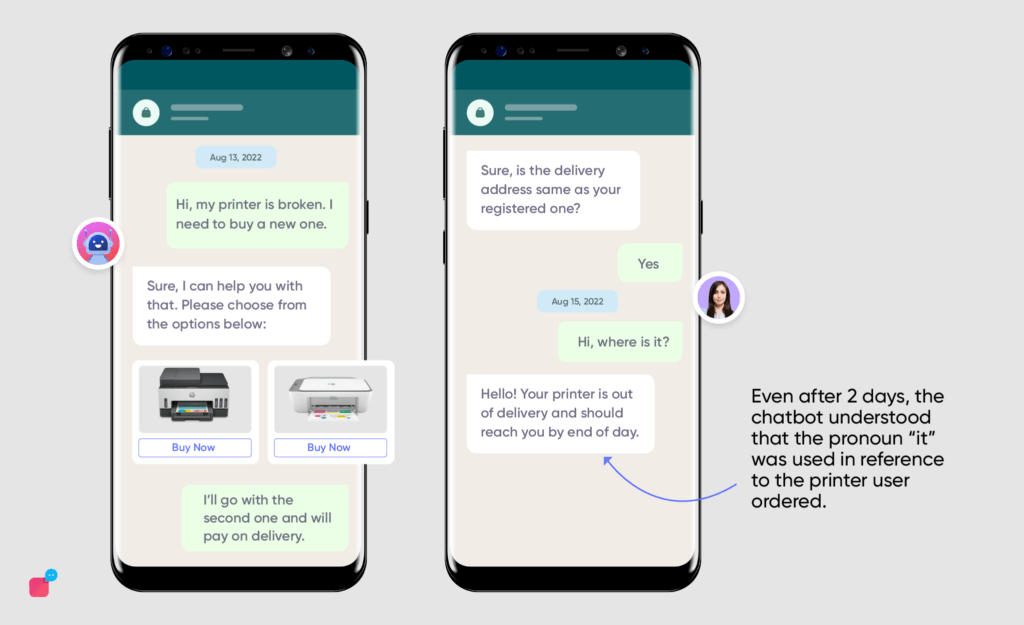
User context
User context, on the other hand, includes information about the user such as name, contact information, last order placed, seat preference in flight, and so on. These are the specifics of a particular user that a contextual chatbot must be aware of. The primary applications of user context are to provide personalised experiences and proactive assistance.
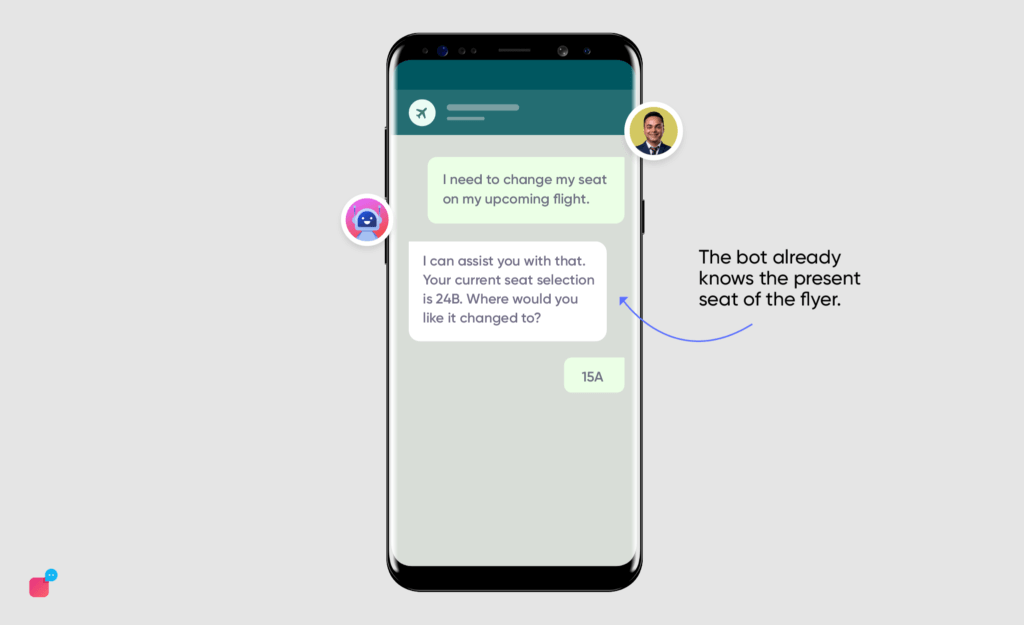
Domain-specific context
Domain-specific context comprises information and widely accepted facts that the customer expects the chatbot to understand during a conversation. Domain knowledge of chatbot support is critical in ensuring that customers need not specify every detail in the request explicitly.
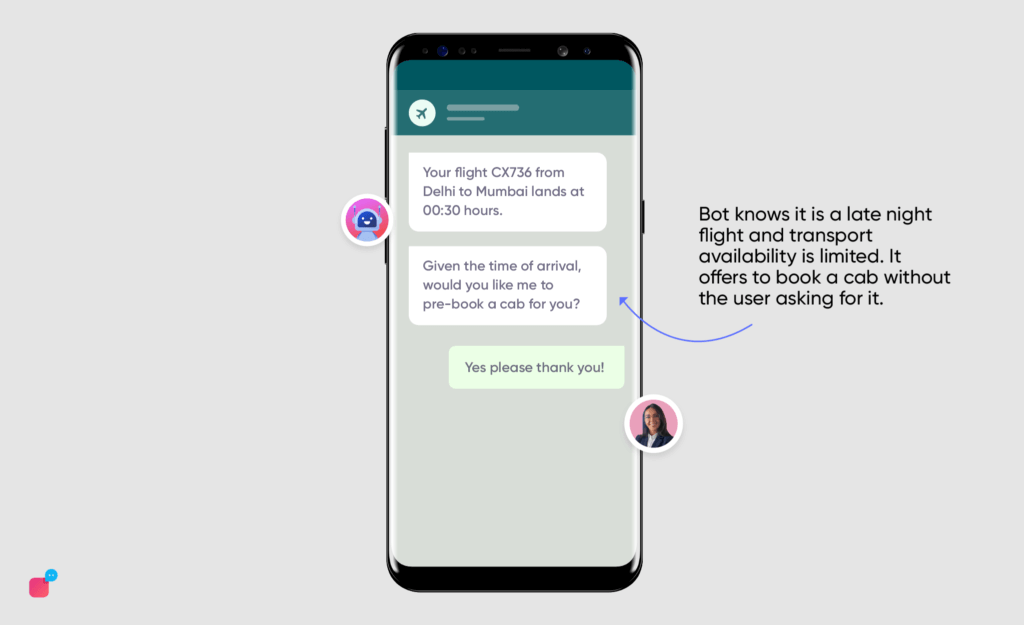
Business/Industry Context
The business/industry context consists of business logic or data that the chatbot must access to respond correctly. This allows it to access third-party data or logic at various stages and predict customer needs.
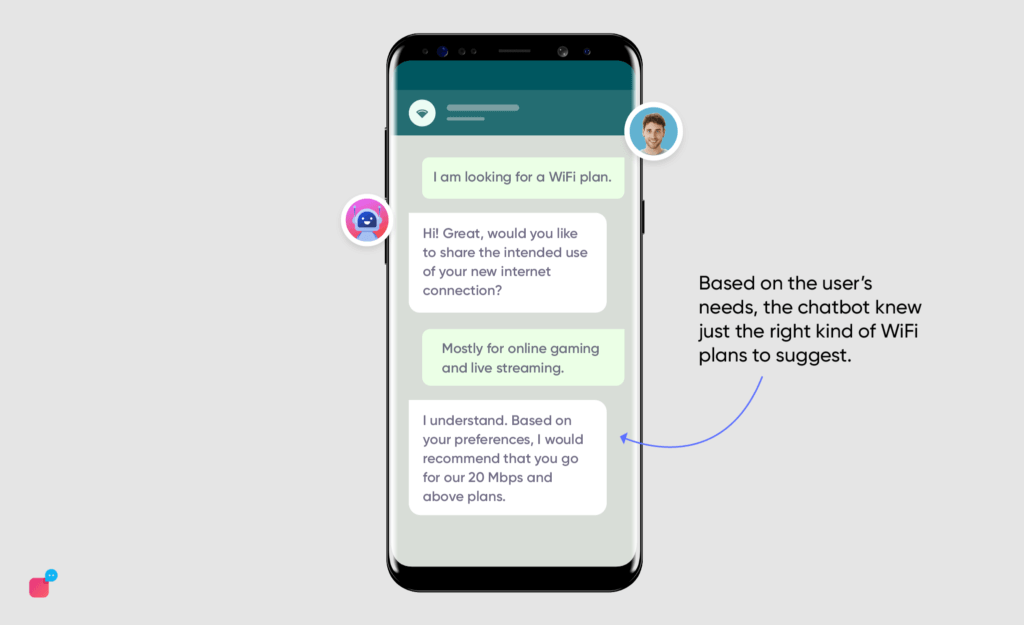
4. Understanding the limitations of human language
Human language is complex and nuanced, and its meaning can change depending on the context. In short, language is ambiguous by nature, vast, versatile, colloquial, dynamic, and highly contextual. A perfect contextual chatbot must be trained to understand the dynamic reality of human language, disambiguate the meaning by considering the context and common patterns in what people say, and learn which words are likely to appear where in the pattern. Also read: What Makes Human to Machine Communication Natural?
5. Make sure the chatbot is trained on lingual datasets
The chatbot’s vocabulary is frequently limited and primarily derived from what we train it on. A good set of training data and the ability to add synonyms, colloquialisms, slang, dialects, etc., can significantly assist your chatbot in understanding more variations in a phrase. Also read: How Localisation Influences Multilingual Chatbots
Contextual chatbot are independent and holistic
Intelligent, contextually driven chatbots are essential for the betterment of businesses. Essential aspects of building an intelligent chatbot include selecting a holistic NLP framework, creating selection masks and meta-knowledge overlays, educating the chatbot about different types of context, and also enabling it to be able to disambiguate conversations based on context.







